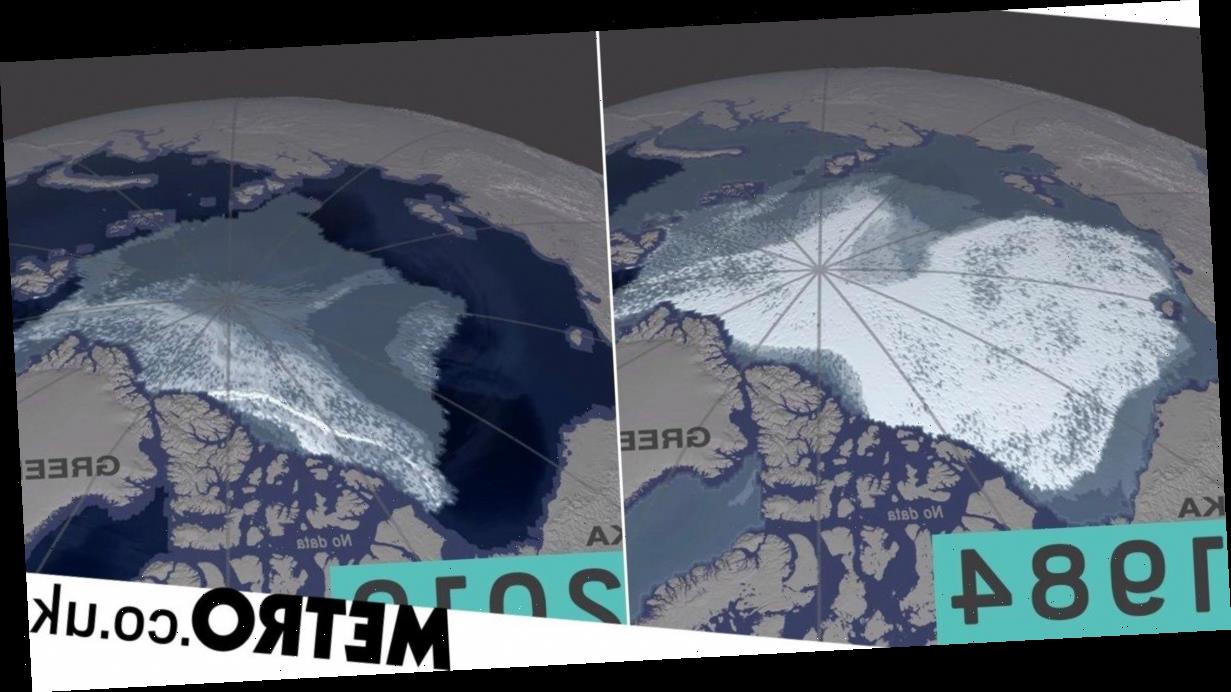A disturbing time lapse shows just how much the Arctic Ocean is changing as a result of climate change.
Historically, the Arctic Ocean contains the oldest and thickest solid layer of frozen water in the world. But over the last 35 years researchers say it’s lost a staggering 95% of its mass.
If trends continue, then summers in the Arctic circle may be free of sea ice entirely by the year 2030.
This research comes from the American Geophysical Union, which has been studying the ice loss from the Canadian Arctic Archipelago down to the northern coast of Greenland.
In a paper published in the Advancing Earth and Science journal the researchers say the receding ice is a ’cause for concern both as a dramatic indicator of our changing climate as well as for its impacts on fragile regional ecosystems’.
Last year witnessed the breaking apart of the Last Ice Area around the Arctic Ocean for the first time.
This area of the Arctic is particularly strong because of the Transpolar Drift Stream, a major weather pattern that pushes ice from Siberia across the Arctic to the coast of Greenland where it packs tightly together.
Twice in 2018 (in February and August) cracks have appeared in this ice and open water has become visible.
Scientists started recording this area in the 1970s and said that 2018 was the first time cracks were witnessed. Now, we have yet more proof that the sea ice around the Arctic is dramatically receding.
And the warnings to change the way humans interact with the planet are only become more urgent if we’re going to have any chance of stopping climate change.
Source: Read Full Article

